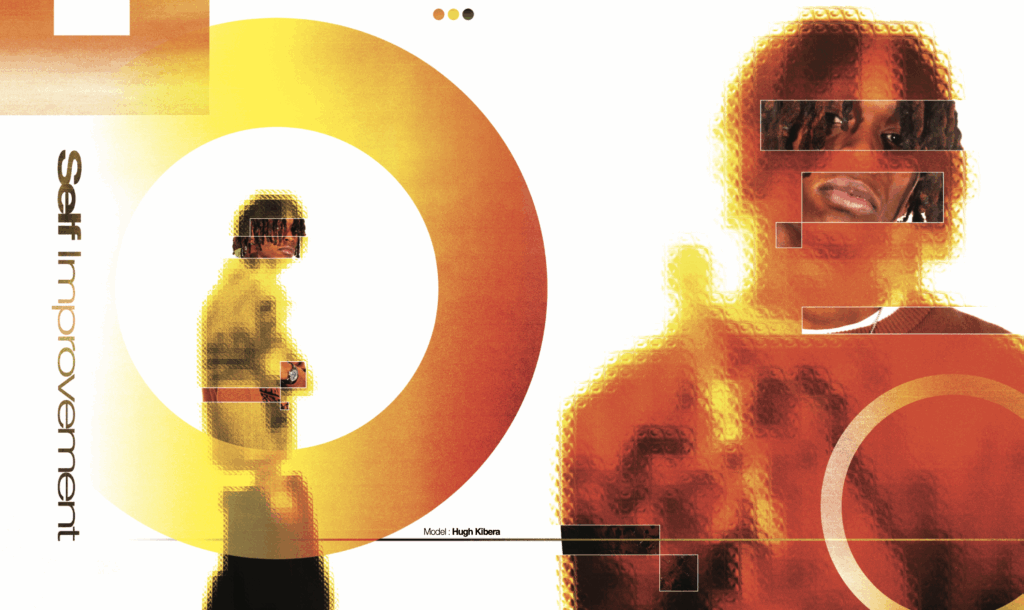Yes, working on resumes and cover letters are great ways to stay productive during quarantine, but creating a website is a fun and creative activity that will benefit you both personally and professionally. Whether you want a new hobby or a place to display your work, having your own site will make you stand out. Plus, you may even start making some money from your site if it gets enough traffic.
Having a website can be great for anyone, no matter what your major or desired career is. If you’re an active LinkedIn user, you can add your website to your page so connections and possible employers can check out what you’re working on. For those wanting to pursue a creative or business related career (or side hustle), websites are great for promoting your work, services or any current projects. Not to mention, showing that you can consistently run and update a website is a desirable skill to anyone looking to hire you.
It may seem complicated and overwhelming to start your own website, so VALLEY is here to help. If you follow our guide, you’ll have the perfect site in no time!
Picking Your Platform
There are many platforms you can choose for hosting your site, but there are definitely some more reputable sites than others. Keep in mind that no matter what platform you use, you may need to spend some money if you want a specific domain or if you want to unlock certain features.
WordPress is a great platform for creating your first site. It’s fairly straightforward to navigate and it’s free for anyone. If you would like to get rid of the .wordpress after your site name, there are a couple payment plans for getting your domain and making your website ad-free.

WordPress also makes it incredibly simple to change up your theme if you want a fresh start. It has the ability to adjust the elements from your current site to fit new templates. There are also various plug-ins that let you link social media pages and other sites, allow viewers to subscribe to your blog, making it easy for viewers to contact you through the site.
Wix is another popular platform that many people choose to use. There are seemingly more free templates that come with Wix, but it can be difficult to change your theme once you have already selected one. Some great features that come with Wix include the plug-in tools. If you’re an active social media user, Wix makes it easy to display your socials on your website and not just link them. For someone with a business or art Instagram, this is an especially amazing feature since viewers can see your posts on your site without separately having to visit your social media pages.
Like WordPress, Wix has a few different payment plans for users depending on what features they want. We recommend working on your free website first and then switching to a plan if there are certain features you need. Wix payment plans are more expensive than WordPress, but they offer interesting features that are worth looking into such as a visitor analytics app and a site booster app.

Ultimately, WordPress and Wix have many similarities. For some people, Wix is easier to use, but other people may prefer WordPress. As mentioned previously, you can start a free site on both platforms, so there’s no harm in starting sites on both if you still aren’t sure about which to use; you will likely find that one is more instinctively easier for you than the other. Both have the ability to create beautiful websites, so it’s most important to feel comfortable with the tools they provide when choosing a platform.
Choosing Your Theme and Layout
Choosing a theme can be an overwhelming task. There are dozens of templates to choose from, and each has a different look and style. Themes are usually sorted by their purpose, whether it is a site for a blog or an online store. Figure out what the purpose of your website is, and then picking a theme will be much easier. Both Wix and WordPress sort their themes by their recommended purposes, so this will narrow down your options.


If you plan on sharing your site with possible future employers, try to choose a theme that represents who you are and what your goals are. This may mean incorporating your favorite colors into the site or finding a theme that accurately represents your aesthetic.
Making your website respectable and easy to navigate is extremely important, especially if you have intentions to use it in a professional setting. Whether you’re planning on making your site more minimalistic or more outgoing and colorful, avoid having too much clutter. Create a menu with clearly defined sections so it’s easy for people to explore.
What Should You Include?
Choosing what to include on your site is greatly dependent on what you want out of it. You may just want a fun side project, you may want to start your own business, or you may want a place to display your work. No matter what your intentions are, don’t feel restricted to making your website revolve around one thing; you are free to include different tabs on your site for the various things you would like to include.
Having an active blog on your website is a great feature, whether or not you’re passionate about writing. This is where you can express yourself and write about whatever you please. Come up with an interesting recipe? Write a blog about it! Want to talk about a typical day in your life? Type up a post! There are really no boundaries to what you can post on your blog, as long as you keep it appropriate and respectful. It’s a great way for viewers to get to know you as a person.
VALLEY highly recommends including a portfolio section on your website. This is where you can keep photographs you have taken, videos you have made, art you have created or pieces you have written. If you’re planning on pursuing a creative career, having all of your work in one place online is helpful for both you and possible employers. It’s also easy to continue to add to an online portfolio over time. Even if you do not want a creative career, it’s great to have a place to store any kind of creative work you have done in case you need it for the future.
Creating a contact page is important, especially if you’re offering any kind of services on your site. Many creatives, whether it’s a career or a side hustle, include their services and rates on their websites in case someone wants to hire them for freelance work. You never know — someone may stumble across your site and want to learn more about the projects you’re working on. Even just having an active blog can open up many possible career opportunities.
Have you created your own website? Tweet us the link at @VALLEYmag on Twitter!






istanbul nakliyat
A well-presented commentary that adds meaningful clarity to the topic.
Useful tips and friendly tone — a winning combination. Thanks!
İstanbul’da bulunan üretim tesisimizde; gıda, medikal, sanayi ve birçok farklı sektör için özel olarak tasarlanmış vakum ambalaj ürünleri üretiyoruz. Ürün …
I never thought about it this way before. Your post gave me a fresh perspective.
I appreciate how you compared different approaches — very helpful.
Very readable and informative. Saved this for future reference.
I appreciate you sharing this blog post. Thanks Again. Cool.